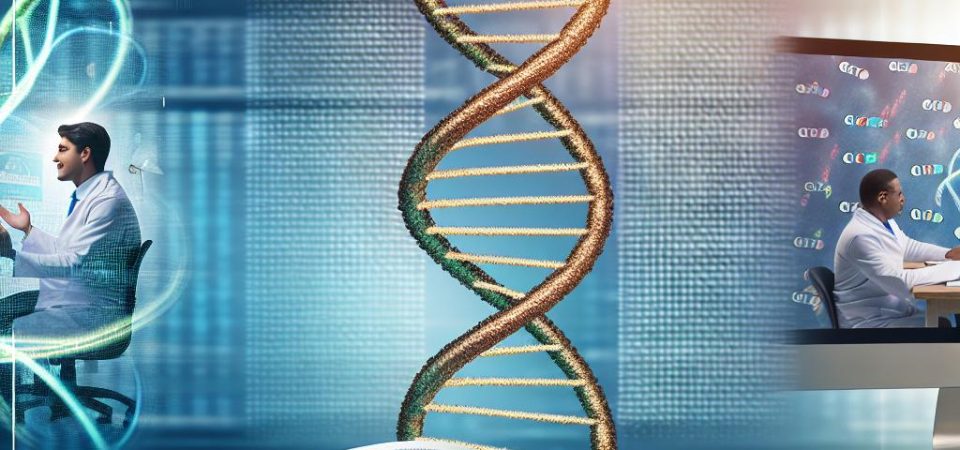The Role of Genetics in Autism
Autism Spectrum Disorder (ASD) is a complex developmental condition that significantly affects one’s ability to interact and communicate with others. Characterized by challenges in social skills, repetitive behaviors, and communication difficulties, ASD encompasses a wide range of symptoms and abilities. Over the years, extensive research has been dedicated to unraveling the factors that contribute to the development of autism, and one of the most significant findings points towards genetics. Although there is no single identified cause, genetic factors are believed to contribute substantially to the majority of autism cases.
Genetic Contributions to Autism
The role of genetics in autism has been a pivotal area of study. Research has consistently shown that genetics accounts for a considerable proportion of the risk associated with developing autism. Studies estimate that genetic factors could account for approximately 50-90% of this risk, illustrating the profound complexity and variability in how genetics contributes to ASD. Such a broad range suggests that multiple genes are likely involved, each playing a different role in influencing the development of the disorder. Several gene mutations and variations have been identified in association with autism, some of which involve de novo mutations. These refer to changes that occur spontaneously and are not inherited from either parent. This highlights the intricate nature of genetic involvement in ASD, where the interplay between different genes contributes to the condition.
Heritability and Family Studies
Heritability studies, particularly those involving families and twins, have been instrumental in understanding autism’s genetic roots. These studies reveal significant insights into the hereditary nature of autism. Research involving twins, for instance, underscores the genetic contributions to ASD. Studies focusing on identical (monozygotic) twins demonstrate a high concordance rate for autism. This means that if one twin is diagnosed with ASD, there’s a strong probability that the other twin will also be on the autism spectrum. In contrast, the concordance rate is significantly lower for non-identical (dizygotic) twins, although still higher than in the general population. Such findings emphasize the hereditary aspect of autism, confirming that inherited genetic factors play a crucial role in its development.
Common and Rare Genetic Variants
The genetic architecture of autism is influenced by both common and rare genetic variants. Common genetic variants refer to small DNA changes that occur frequently among individuals. Although each of these variants typically has a modest effect individually, their cumulative impact can be significant. On the other hand, rare genetic variants can have a more substantial influence on the development of ASD. These often manifest as copy number variations (CNVs), involving larger segments of DNA that differ between individuals. Technological advancements in genome sequencing have greatly facilitated the discovery of both types of genetic variants, enhancing our understanding of their respective impacts on autism.
Gene-Environment Interactions
While the genetic predisposition plays a pivotal role in the development of autism, environmental factors also significantly contribute. The concept of gene-environment interactions suggests that genetic susceptibilities might be influenced by various environmental elements. For instance, certain environmental factors could impact individuals predisposed to autism, altering the course or severity of the disorder. Examples of such factors include parental age, prenatal exposure to pollutants, maternal health conditions during pregnancy, and other environmental influences. Understanding these complex interactions remains a critical area of research, offering insights into how genetic and environmental factors collectively impact ASD development.
The Importance of Ongoing Research
Continued research in the genetic aspects of autism is crucial to uncovering the complexities surrounding the disorder. Identifying specific genetic markers linked to ASD could pave the way for improved diagnostic methodologies and inform the development of personalized treatment strategies. This personalized approach, which accounts for an individual’s genetic blueprint, holds the potential to significantly enhance the effectiveness of interventions. Moreover, genetic research in autism promises to advance early intervention efforts, potentially mitigating some of the challenges associated with the condition by addressing them at an earlier stage.
For readers interested in further exploring current research efforts, numerous resources provide updated information and insights into genetic research related to autism. Institutions like the National Institute of Mental Health and Autism Speaks offer comprehensive resources and updates on ongoing studies. Understanding the genetic basis of autism not only enhances our knowledge of the disorder but also fosters the development of targeted therapies and support strategies. Such advancements can have a profound impact on the lives of individuals with ASD and their families, improving their quality of life and broadening their opportunities.


